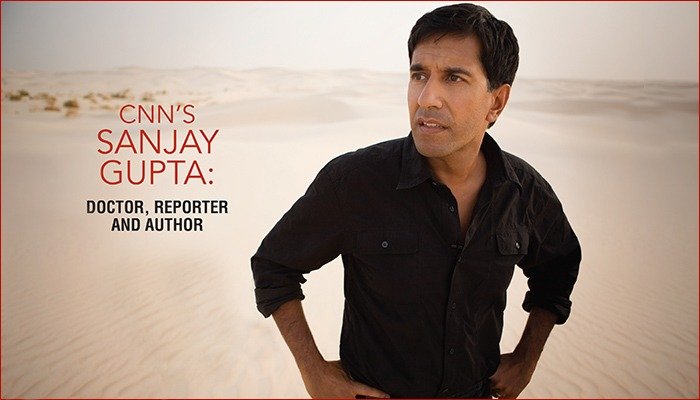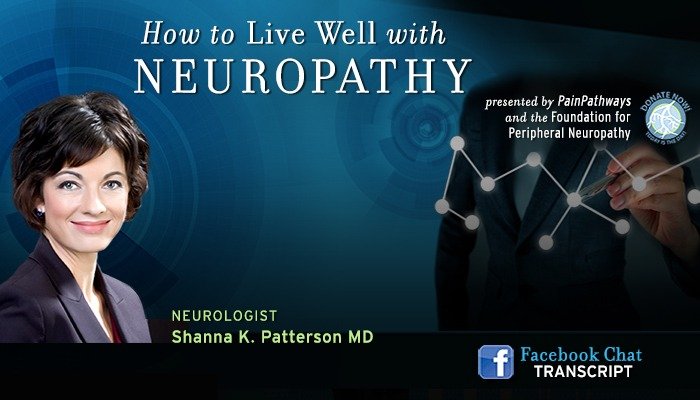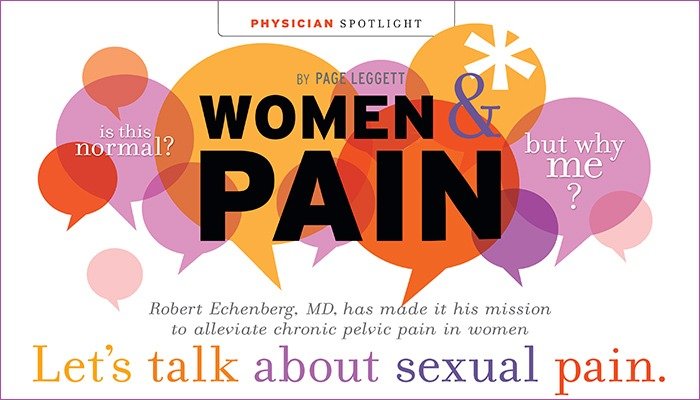Sanjay Gupta, MD

A 29-year-old medical resident on a skiing excursion is trapped between rocks and a shelf of ice for more than an hour, her head submerged in freezing water. When rescued, she is blue and lifeless with no breath and no pulse, and another hour passes before she arrives at the nearest hospital with a core body temperature of 55 degrees Fahrenheit. Although the young woman has been clinically dead for more than three hours, doctors utilize revolutionary treatment methods to slowly warm her body to a normal temperature, withholding fluids to minimize the swelling that often occurs in hypothermic patients. Six months later, the patient who was “dead” by most medical definitions returns to work and eventually completes her medical training.
In Arizona, a fit 59-year-old suffers cardiac arrest and crashes his car into a tree. A UPS driver comes across the accident scene and immediately starts CPR. When paramedics arrive, they continue the compressions.
However, these paramedics are not performing the standard CPR procedures used by many medical professionals. Instead, they ignore mouth-to-mouth resuscitation and complete 200 compressions in two minutes, alternating with electric shocks from a defibrillator. The patient survives and later returns to the fire station to thank the paramedics who saved him with revolutionary CPR methods.
Both of these compelling stories are told in Cheating Death: The Doctors and Medical Miracles that Are Saving Lives Against All Odds. Written by Dr. Sanjay Dr. Gupta, a renowned neurosurgeon, author and chief medical correspondent for CNN, Cheating Death offers a fascinating behind-the-scenes look at how one determined group of doctors is refusing to give up on patients whose survival is deemed “hopeless” by many.
Cheating Death
“The stories in the book really focus on people who are near death, for whatever reason, whether trauma or some sort of illness,” says Dr. Gupta. “I focused on the idea that we’re not really sure when death occurs and when life ends. We know it is a much broader, grayer area than we imagined in the past, and there are people who are now focusing on that gray area and how to pull people back from the brink of death.
“The treatments described in the book include everything from hypothermia to suspended animation to different guidelines for CPR and fetal heart surgery,” he says. “I found it fascinating because you’re tinkering with both the beginning and the end of life.”
Cheating Death will be released nation-wide in October, and Dr. Gupta believes that many of the cases described in the book are the precursors to major medical breakthroughs that will eventually expand the clinical of life and death. Using his unique role as both an experienced physician and a seasoned journalist, Dr. Gupta tells the stories in Cheating Death with the same commonsense, down-to-earth dialogue that has made him a favorite media personality with millions of Americans. Another Day—Cheating Death, a documentary based on Dr. Gupta’s book, also debuts this fall on CNN.
Combining a High-visibility Media Role with a Medical Career
In his role at Emory University School of Medicine, Dr. Gupta is an active member of the medical staff and department of neurosurgery. He operates and meets with patients weekly and is quick to tell people that he considers himself a doctor “first and foremost.” However, for millions of CNN viewers, Dr. Gupta is also the familiar expert on health and medical issues, and whether covering an outbreak of swine flu in Mexico, the war in Iraq or Hurricane Katrina, the charismatic journalist is highly regarded for his reporting skills and has earned the cable news network critical acclaim.
“I’ve been doing this dual career for over seven years, and for the most part, I’ve kept the jobs separate,” Dr. Gupta says, referencing his medical and media positions. “I operate every Monday and sometimes on Friday, and I see patients in the on Wednesday. I have always felt that medicine is my calling, and I still see myself very much as a doctor But that is not to say that I don’t love the world of journalism—I do. Luckily, I’ve been able to balance the two.”
To report on the swine flu outbreak, Dr. Gupta traveled to Mexico City, the apparent epicenter of the outbreak. During his broadcasts, he stated that since the flu seems to include several different flu strains, it poses unique challenges for the medical community.
“If we can figure out what happened here, we may figure out what happened in the rest of the world,” Dr. Gupta said during a report from Mexico City. “This particular virus seems to be a combination of several different flu strains—two strains of swine flu, one strain of bird u and one strain of human flu. The flu shot protects against one part of the virus, but it is very hard to figure out how deadly this virus is. One hundred people have died here in Mexico, and 1,300 have been seriously ill, but we don’t know how many mild cases have occurred.”
During his career, Dr. Gupta has reported from many “hot spots” throughout the world. In 2003, he traveled with the “Devil Docs,” a United States Navy medical unit. While in Iraq, Dr. Gupta performed emergency brain surgery on a wounded Iraqi boy because he felt a “medical moral obligation” to help. Two years later, he traveled to Charity Hospital in New Orleans in the days following Hurricane Katrina and broke the news that the medical facility had not been evacuated as reported, but still held more than 200 patients five days after the storm made landfall. Lauded for his broadcasts, Dr. Gupta says that his two chosen professions complement each other in unusual ways.
“I really do believe that being a reporter has made me a better doctor, because part of being a reporter is really learning the story of the people you’re following,” Dr. Gupta says. “Because doctors are so busy, and because you have to often see 50 patients in the office in half a day, you don’t get the time you want to spend with patients. Now, I just make it a real point to learn the stories of my patients, and I know them so well that it has made me a better doctor and much more compassionate in some ways.
“Also, being a doctor informs my re-porting every single day,” Dr. Gupta says. “I’ve worked in a lot of hospitals, and I think that gives me a pretty unique perspective. So the interplay is mutually beneficial, and I wouldn’t have necessarily guessed that in the beginning.”
Diet and Disease
As a reporter and author, Dr. Gupta routinely explores the link between diet and common health problems. A strong proponent of patients taking charge of their own health, he advocates exercise, healthy food and a little creativity when it comes to making it all work on a daily basis, and he has introduced several programs that address current health issues, including Fit Nation, CNN’s multi-platform grassroots initiative against obesity and Danger: Poisoned Food, a program that investigates the regulatory environment in the United States that contributes to the prevalence of processed foods.
“When I look at health care overall, I’ve been very interested in things that individuals can do themselves to try and take better control of their health,” Dr. Gupta says. “There are so many things people want to feel autonomous about with their health, and there are denitely certain things within the diet and lifestyle that people generally know they should be doing. But I’ve found that while there is information out there about these things, there is not a lot of knowledge about how to apply these to everyday life. In the near future, I want to focus on two particular areas—one, the epidemic of obesity in this country, and two, the amount of inflammation in our bodies at any given time and how that may be linked to diet. For example, which foods increase inflammation and which cause it to decrease?”
Practicing What He Preaches at Home
Dr. Gupta and his wife, parents to three children under the age of four, have developed their own formula for a healthier diet. One of the things they do is abstain from buying meat. Although not vegetarians, the couple limits their meat consumption to dining-out occasions, and Dr. Gupta says it’s just one of the ways they try to focus on healthier eating habits.“
My wife and I had a lot of back-and-forth on the issue of not buying meat,” he explains with a chuckle. “We do eat meat, but I’m worried about my own diet and a family history of heart disease, and that was one of the reasons we started thinking about meat in particular.
“Part of the back-and-forth was because when we do cook meat in our own home, we control things like how much salt or butter is added and how it’s prepared, so we can make it the healthiest sort of meat possible. But we decided not to have it in the house anymore, so when we order it out, we are very specific about how we order.”
In between hours at the hospital and CNN, Dr. Gupta tries to schedule a daily workout, and he makes regular exercise a high priority. However, even one of America’s most famous doctors has his own diet busters.
“Ice cream is a total weakness of mine and an absolute exercise killer because I will have this great workout and then around nine o’clock, I want a bowl of ice cream,” says Dr. Gupta. “So, like meat, we don’t keep it in the house anymore, and when I want ice cream, I have to walk to the ice cream store to get it, which is about a mile away.”
Health Care Reform
Dr. Gupta, who earlier this year was considered for the U.S. surgeon general position, continues to be committed to reporting on the major issues and events of the day. As a prominent medical corre-spondent, he foresees many reports about health care reform in his future. Admitting that there are no easy answers to the health insurance coverage issue, Dr. Gupta does believe that certain problems within health care must be addressed.
“Health care is a huge topic,” he says. “Some people believe in a single-payer system. Others believe in a public/private system. And others believe we shouldn’t have any public involvement in health care outside of the entitlements that already exist. As a physician, I think it’s tough to see people who are uninsured die of prevent-able diseases, things that they would have otherwise been able to treat if they had insurance or some sort of safety net. That’s why I think it is imperative medically, if not morally, to make sure people have access to health care.
“It’s going to cost a certain amount of money, and that’s where a lot of the haggling comes in,” Dr. Gupta continues. “We have a health care system that charges too much for too little, and the result is that there are certain people probably getting more health care than they need and others who aren’t getting enough. I think fixing that disparity through one of these mechanisms is probably going to be at the heart of all this.”
Dr. Gupta’s View on the Evolution of Pain Management
Dr. Gupta’s medical career began at an early age. He graduated from high school when he was 16 and immediately entered a program that combined undergraduate college studies with medical school training at the University of Michigan Medical Center. As a physician who has now been practicing for more than a decade, he says that he is excited about the medical advances made in recent years, and he believes that more significant developments are on the horizon, including many in the pain management field.
“As a neurosurgeon, I take care of a lot of patients who have chronic and acute pain,” Dr. Gupta says. “Within our world of neurosurgery, pain therapy and physical therapy, we have a much better recognition of pain than ever before, and we’re much better at being able to treat chronic pain in a way that allows a normal lifestyle to be maintained. We’re much better at finding medications that aren’t as sedating but still provide good pain relief.
“I also think that in the surgical world, the technology that has evolved has really been remarkable, from spinal cord stimulators to narcotic pumps that are usually used for debilitating, terminal chronic pain,” he continues. “I’ve had patients whose lives have just been completely turned around by some of these advancements.”
The Bottom Line on Living with Pain
September is National Pain Awareness Month, and for the millions of people suffering from chronic or acute pain, Dr. Gupta encourages a proactive approach. He says that pain patients should be diligent about getting the care they need, and he advises individuals to seek health care providers experienced in the field of pain management.
“For doctors, I think there is a sense of helplessness if you can’t help the patient, and sometime, unfortunately, that might translate into the patient feeling ignored,” he continues. “But there are good pain clinics around, and there are people there who are trained to treat pain. If you’re going to your primary care doctor every couple of months and asking for a pain prescription, you’re probably not moving the dial on your situation and are creating a recipe for potential disaster and distrust. You need to find somebody who is more comprehensive with regard to pain management.
“No one should be in chronic pain anymore,” Dr. Gupta says. “We’ve advanced too far as a medical society for someone to live under the scourge of pain. I’ve seen people who are just so debilitated by pain that they are not living a normal, let alone good, life, and it doesn’t have to be that way.” {PP}
PainPathways Magazine
PainPathways is the first, only and ultimate pain magazine. First published in spring 2008, PainPathways is the culmination of the vision of Richard L. Rauck, MD, to provide a shared resource for people living with and caring for others in pain. This quarterly resource not only provides in-depth information on current treatments, therapies and research studies but also connects people who live with pain, both personally and professionally.
View All By PainPathways






